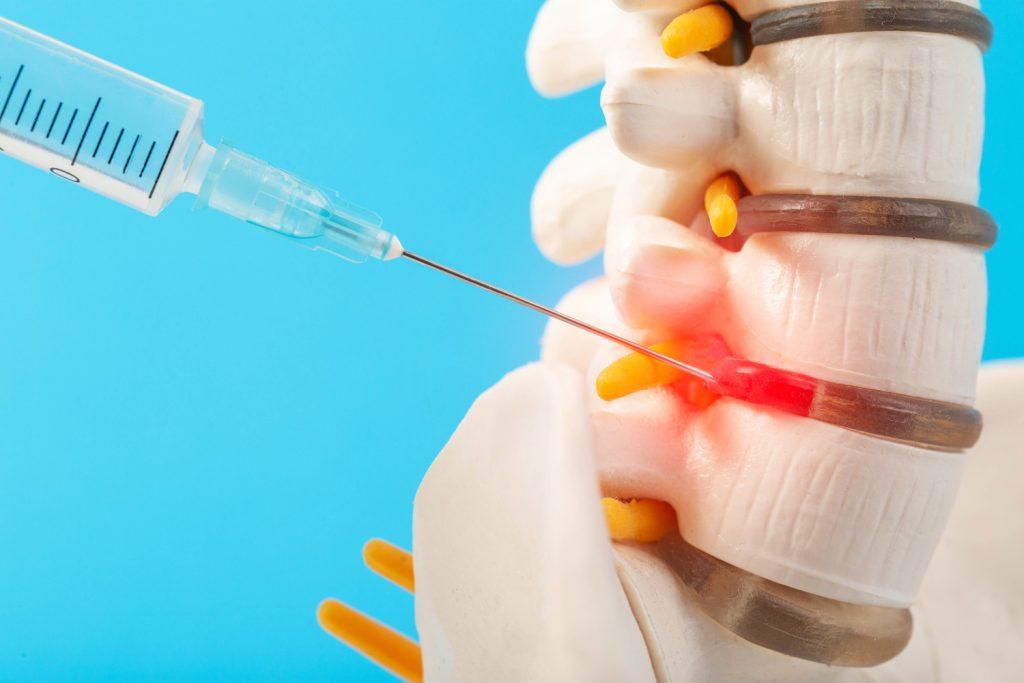The Importance of Physical Therapy after Laminectomy Surgery

Physical therapy plays a vital role in the recovery process following laminectomy surgery. It is essential for maximizing outcomes and restoring function after the procedure. This exploration will explore the significance of physical therapy after a laminectomy, outlining its benefits, goals, treatments, duration, and tips for a successful recovery. Join us as we uncover the crucial role of physical therapy in the path to recovery post-laminectomy surgery.
What Is a Laminectomy Surgery?
Laminectomy surgery, also called decompression surgery, alleviates spinal nerve pressure by removing the lamina, the bony arch of the vertebra. It’s recommended for spinal stenosis and herniated discs. Spinal stenosis narrows the spinal canal, causing pressure on nerves and resulting in back and leg pain, weakness, or numbness. Herniated discs happen when the soft disc center protrudes through its tough exterior, compressing nerves and causing symptoms.
Why Is Physical Therapy Important After Laminectomy Surgery, and What Are Its Benefits?
Physical therapy after laminectomy surgery is crucial for postoperative care and rehabilitation. It targets the lumbar spine to restore mobility, strength, and musculoskeletal healing. Skilled therapists use tailored exercises to prevent muscle atrophy, lessen pain, and enhance overall function. Sessions include stretching, strengthening, and conditioning exercises tailored to individual needs. Physical therapy educates patients on proper body mechanics and movement, preventing future spine issues.
Benefits of physical therapy after laminectomy surgery include improved mobility, pain management, tailored exercise regimens, and enhanced recovery. It strengthens spine-supporting muscles, reducing future injury risks. Personalized treatment plans ensure gradual improvement in mobility and function. Therapists’ guidance promotes proper body mechanics, aiding a quicker and more successful recovery.
What Are the Goals of Physical Therapy After Laminectomy Surgery?
Post-laminectomy physical therapy targets muscle strengthening, flexibility, range of motion, and scar tissue management. The aim is functional independence and long-term recovery. Specific exercises like core strengthening and resistance training build stability. Stretching and joint mobilization improves flexibility, while scar tissue is managed to prevent adhesions and promote healing.
1. Pain Management
Physical therapists focus on effective pain management post-laminectomy surgery to facilitate a smooth recovery. Patients may experience discomfort hindering rehabilitation progress. Therapists use manual therapy, exercises, and modalities like heat or ice to address pain. Tailored treatment plans optimize outcomes and comfort, reducing complications such as stiffness or weakness. Early intervention and proper pain management promote healing and prevent complications.
2. Restoring Mobility and Function
Physical therapy post-laminectomy surgery aims to restore mobility and function. Therapists use targeted exercises, balance training, and education on proper body mechanics to help patients regain independence. Improving balance is crucial for preventing falls and enhancing quality of life. Sessions focus on strengthening core muscles and improving stability. Therapists teach patients to maintain a solid posture to minimize the risk of falls and injuries. Guidance on proper body mechanics promotes efficient movement patterns, empowering patients to navigate daily routines confidently.
3. Improving Posture and Body Mechanics
Improving posture and body mechanics is vital for long-term recovery after laminectomy surgery. Physical therapy focuses on patient education, gradual exercise progression, and long-term recovery goals to enhance outcomes. Proper alignment and movement patterns are crucial in preventing complications and promoting healing. Patients learn about the importance of alignment to reduce strain on the spine and muscles. A gradual introduction of tailored exercises helps rebuild strength and flexibility safely. Physical therapy offers personalized care plans and monitors progress for sustainable recovery.
4. Preventing Complications
Preventing complications after laminectomy surgery is a primary focus of physical therapy. Personalized rehabilitation programs help individuals regain strength and mobility, promoting independence. Functional independence improves quality of life and reduces reliance on external assistance. Targeted exercises and manual techniques address scar tissue formation, preventing adhesions that restrict movement and cause discomfort. Gentle stretches and modalities optimize tissue healing and minimize the impact of scarring on long-term function.
What Does Physical Therapy After Laminectomy Surgery Involve?
Post-laminectomy surgery, physical therapy employs a holistic approach comprising stretching, strengthening, manual therapy, and pain relief modalities. Stretching exercises improve spinal flexibility and prevent stiffness while strengthening exercises enhance stability. Manual therapy techniques like massage and joint mobilization reduce pain, improve tissue flexibility, and boost circulation. Modalities such as heat therapy and ultrasound effectively manage pain and inflammation. This comprehensive regimen aims to optimize recovery and restore functionality.
1. Stretching and Strengthening Exercises
Stretching and strengthening exercises are essential parts of post-laminectomy surgery physical therapy. They improve flexibility and strength and educate patients on proper posture and body mechanics. Incorporating these routines enhances mobility and reduces complication risks. Education on optimal posture and body mechanics prevents strain and fosters better long-term outcomes. Proper alignment and muscle balance are crucial for overall wellness and injury prevention. Diligent adherence to these exercises leads to smoother recovery and improved quality of life.
2. Manual Therapy Techniques
In post-laminectomy surgery physical therapy, manual therapy techniques are employed to target musculoskeletal issues and promote healing. These techniques are customized to meet the individual needs of patients undergoing short-term or long-term therapy. Effective manual therapy includes mobilization, manipulation, and massage, applied with targeted pressure and movement to increase flexibility, reduce pain, and improve function. These approaches aid in restoring range of motion, enhancing circulation, and preventing muscle atrophy, which are common concerns post-surgery. Integrating manual therapy into a comprehensive rehabilitation program expedites recovery, improves outcomes, and optimizes the patient’s postoperative experience.
3. Modalities for Pain Relief
In physical therapy after laminectomy surgery, pain relief modalities like heat therapy, electrical stimulation, and ultrasound are commonly used to alleviate discomfort and aid healing. At Iowa Clinic, these modalities are customized to each patient’s needs. Heat therapy increases blood flow, reduces muscle tension, and promotes relaxation. Electrical stimulation stimulates nerves for muscle contraction and pain modulation. Ultrasound targets deep tissue with sound waves, reducing inflammation and speeding healing. These modalities address pain directly and assist patients in their recovery journey after laminectomy surgery.
4. Education in Posture and Body Mechanics
In physical therapy after laminectomy surgery, educating patients on proper posture and body mechanics is essential. Therapists focus on enhancing functional independence and integrating balance training to empower patients in maintaining spine health and preventing future issues. Proper posture reduces stress on the spine and surrounding structures, minimizing complications post-surgery. Teaching patients to sit or stand with straight backs, relaxed shoulders, and evenly distributed weight is key. Educating individuals on body mechanics during daily activities like bending, lifting, and walking prevents strain on the recovering spine. By instilling these principles, patients develop habits that support long-term spinal health and overall well-being.
How Long Will Physical Therapy Be Needed After Laminectomy Surgery?
The duration of physical therapy required post-laminectomy surgery varies depending on individual factors. Short-term treatment typically lasts 4-6 weeks, and long-term therapy extends beyond 6 weeks. The focus remains on promoting proper body mechanics and delivering patient education for sustained recovery.
Short-term Physical Therapy (4-6 Weeks)
Short-term physical therapy, lasting 4-6 weeks post-laminectomy surgery, focuses on gradual exercise progression to facilitate long-term recovery and functional independence. Initially, gentle movements and stretches promote flexibility and reduce stiffness around the surgical site. As the weeks progress, therapy includes strengthening exercises targeting core muscles for improved stability. Therapists closely monitor progress, adjusting exercises to match increasing strength and endurance.
Long-term Physical Therapy (6+ Weeks)
Long-term physical therapy, extending beyond 6 weeks post-laminectomy surgery and led by skilled therapists like Jason Augustine PT, focuses on sustained progress, functional independence, and long-term recovery goals. This phase emphasizes building strength, improving flexibility, and enhancing mobility. Therapists customize exercises and techniques to individual needs, while patient education helps patients understand the condition, treatment plans, and the importance of compliance for optimal outcomes.
What Are Some Tips for a Successful Recovery with Physical Therapy?
Balance training, scar tissue management, and adherence to rehabilitation guidelines are crucial for a successful recovery with physical therapy after laminectomy surgery. Balance exercises improve stability and prevent falls, while scar tissue management techniques like massage and stretching enhance flexibility. Adherence to guidelines ensures consistency and proper progression in exercises. Communication with your healthcare team is essential for effectively addressing concerns and tracking progress.
Warning: urlencode() expects parameter 1 to be string, array given in /www/wwwroot/surgeryconsultantsofflorida.com/wp-includes/formatting.php on line 5693

